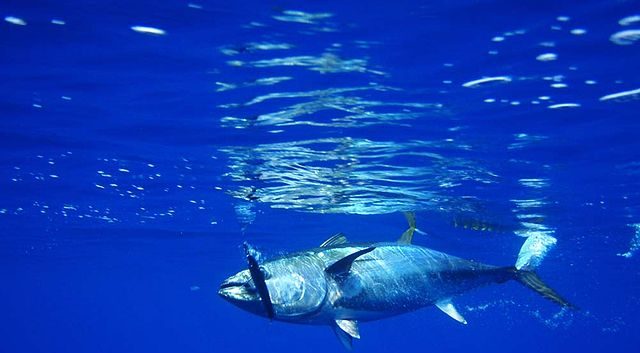Canso fisheries on the North-eastern coast of Nova Scotia in Canada have reported a boom in the fabled Atlantic bluefin tuna.
Ginny Boudreau, manager of the Guysborough County Inshore Fishermen Association said Canso fishermen landed “500 fish” by December, 2023.
This number comes as a boon considering that in 2022 the figure was 20% less. The elated fishermen also call this their biggest harvest in a decade.
More so, the season’s stock has increased in size, with each fish weighing from 400 to 500 pounds. There have also been reports of giants nearly double that size, at 750 pounds.
Fishermen rate the Atlantic bluefin tuna (Thunnus thynnus) by its size since the larger the mass, the greater the aggregate price. At end 2023 and early 2024, the average landing dock price has been between $5 and $20 a pound. The median price, however, has tended to fall in the $15 per pound range.
At retail outlets in Canada, bluefins cost a median of $90.59 per kilogram.
Plenty of Feed amid Warming Habitat
For the Atlantic bluefin tuna to reach its heavy weight, it requires plenty of prey that include crustaceans, mackerel and herring.
Warming waters on the West Atlantic from Maine to Nova Scotia have attracted plenty of new small fish species to lobster and bluefin territories. These species such as herring and mackerel in turn fatten the bluefin tuna.
This abundance of prey has made it difficult to catch the Atlantic bluefins which no longer swim the surface for food.
Hence, Canso fishermen may take between two and four months to land the fish, but they always catch well-fed giants.
Furthermore, they fish sustainably to protect the habitat. Instead of harpoons which might kill smaller fish, they resort to the rod-and-reel means. This method allows them to return accidentally caught small fish into the ocean with little or no injury.
Quota Increase
Besides landing large sizes of bluefin tuna in the foregoing season, the Canadian harvesters have also been enjoying an increasing quota. The last projections in 2022 put the quota at 543.6 metric tonnes of this fish per year.
Each year, the International Commission for the Conservation of Atlantic Tunas (ICCAT) allocates member nations a Total Allowable Catch (TAC). As a member of the Western Atlantic, which also includes Mexico and the United States, Canada receives 22.34% TAC.
In 2021, bluefin tuna-fishing nations including Japan negotiated a raise of at least 4 to 16% of TAC. They cited increasing numbers of the mighty fish in their territorial waters for this raise in quota.
Canada allows an all-year bluefin tuna season. However, the Cansa season runs parallel to the main Atlantic tuna season from September to December. Each fisherman has a limit of 6 fish during the season.
